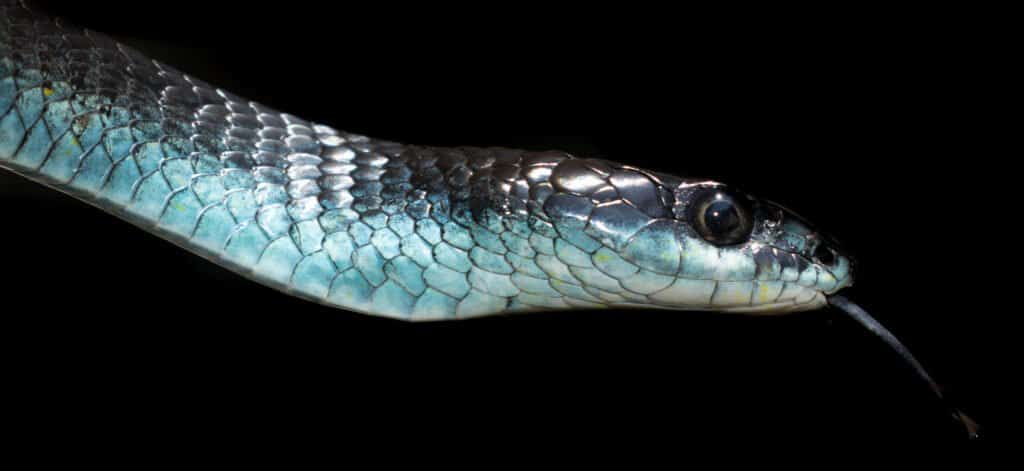Introduction
When it involves venomous serpents, Australia is home to a few of one of the most interesting and hazardous types worldwide. Among these, the Tiger Snake sticks out not just for its powerful venom but likewise for its intriguing actions. Recognizing the behavior of venomous snakes like the Tiger Serpent is vital for both wildlife fanatics and those staying in areas where these snakes exist. This post explores numerous aspects of Tiger Snake habits, environment, recognition, precaution, and emergency treatment practices in instance of a snake king brown bite.
Understanding the Actions of Venomous Snakes Like the Tiger Snake
The Tiger Snake, medically referred to as Notechis scutatus, is well-known for its aggressive nature when intimidated. These serpents exhibit a variety of actions that can be rather various from their non-venomous equivalents.

Characteristics of Tiger Snakes
The Tiger Serpent is quickly recognizable because of its unique bands or red stripes that resemble a tiger's markings. They can differ in color from yellowish-brown to dark olive or black. This coloration offers not only as camouflage but also as a caution signal to possible predators.
Adaptability to Environment
One amazing aspect of their actions is their versatility to various settings. Discovered mainly in coastal areas, marshes, and wetlands throughout Australia and Tasmania, they http://ricardowlry405.timeforchangecounselling.com/just-how-to-safely-observe-tiger-snakes-in-their-natural-environment can grow in diverse environments including urban locations.
Educating about venomous snakesHunting Techniques
Tiger Serpents are ambush predators primarily preying on fish, frogs, and small creatures. They possess eager vision and a severe feeling of scent which aids them in finding prey effectively.
Venom Composition
Their venom has neurotoxins that impact the nerve system, resulting in paralysis or fatality in smaller sized animals. For humans, immediate clinical interest is essential after a tiger snake bite as a result of its potentially deadly effects.
Natural Habitat of Tiger Snakes
Preferred Locations
Understanding where these serpents live sheds light on their behavior patterns. The tiger snake habitat includes:
- Coastal regions Swamps Grasslands Urban locations with plentiful water sources
Seasonal Movements
During warmer months, Tiger Snakes are more energetic as they indulge in sunshine or hunt for food. On the other hand, cooler months see them pulling back into hibernation sites.
Are Tiger Snakes Venomous?
Yes! The concern "are tiger snakes venomous?" usually develops amongst those not familiar with this varieties. Their venom is considered one of the deadliest among all serpent types worldwide.
Symptoms of a Tiger Serpent Bite
If bitten by a tiger snake, signs and symptoms may include:
- Localized pain Swelling at the bite site Nausea and vomiting Sweating and confusion
Immediate clinical aid is essential as neglected attacks can result in severe health difficulties and even death.
First Aid for Snake Bites: Quick Response Guide
Knowing just how to carry out emergency treatment for a serpent bite might save a person's life. Here's what you need to do:

Step 1: Stay Calm
Keeping calmness helps decrease heart price which lowers venom spread.
Step 2: Debilitate the Impacted Area
Keep the impacted limb still and listed below heart degree if possible.
Step 3: Call Emergency Situation Services
Always look for expert clinical assistance promptly after a snake bite.
First Aid for Snake Bite Set Essentials
A well-appointed snake bite first aid kit must include:
- A compression bandage Antiseptic wipes A set of scissors An ice bag
Safety Preventative measures: Avoiding Snake Bites in Australia
Awareness Programs
Educating communities about local serpent varieties and their actions can significantly reduce encounters causing bites.
Avoiding Unsafe Areas
Staying away from long yard during warmer months lessens contact with serpents that might be relaxing or hunting.
Common False impressions Regarding Tiger Snakes
Many individuals think mistaken beliefs about the actions of tiger snakes cause unnecessary worry. Below are some information:
Myth 1: All Tigers Are Aggressive
Not all tiger serpents will display aggressiveness if left uninterrupted; lots of favor running away as opposed to confrontation.
Myth 2: They Chase Humans
Tiger serpents do not proactively chase human beings; they might strike when they really feel endangered but will usually pull back if given space.
Conservation Efforts Associated with Venomous Snakes
Conservation initiatives concentrate on enlightening neighborhoods concerning safeguarding local wildlife while decreasing human-snake interactions.
Importance of Ecosystems
Understanding that venomous snakes play a vital role in maintaining environmental equilibrium helps foster appreciation as opposed to fear in the direction of them.
FAQs Concerning Tiger Snakes
What needs to I do if I experience a tiger snake?- Maintain distance and slowly back away without sudden movements.
- While attacks aren't very typical because of awareness efforts, they still happen every year within Australia.
- Baby tiger snakes can provide full doses of venom in spite of being smaller sized; therefore caution is suggested around them.
- They mainly eat frogs, fish, small animals like rats, and other reptiles.
- It's prohibited in many territories without correct licensing due to safety issues regarding their venom.
- Wear tough boots and remain on significant trails; look prior to placing hands or feet into hidden areas like rocks or logs.
Conclusion
Understanding the habits of venomous snakes like the Tiger Serpent not only improves our expertise yet additionally advertises safety recognition amongst those living near their environments. From recognizing their qualities, recognizing first aid protocols following a bite, via involving preservation efforts-- every aspect plays an essential role in cultivating conjunction with these interesting reptiles while appreciating their place within our ecosystem.
As we grow our understanding with education and experience, we add positively towards guaranteeing both human safety and wild animals conservation-- benefitting all celebrations involved!